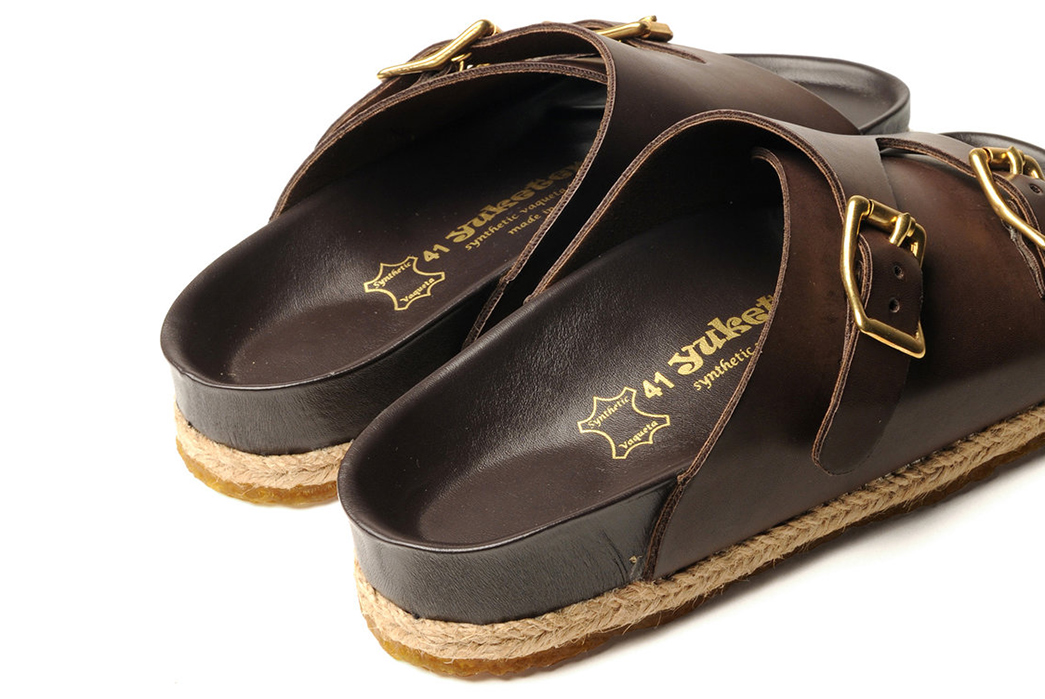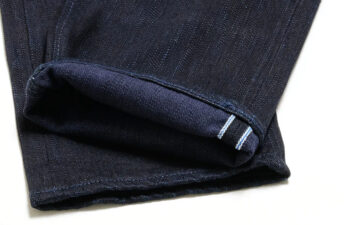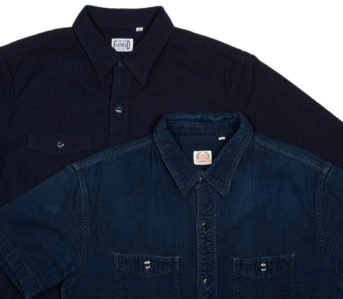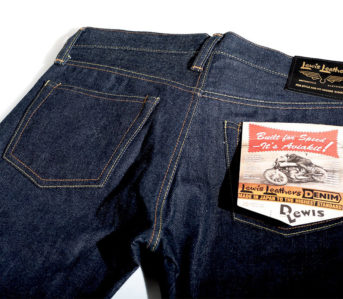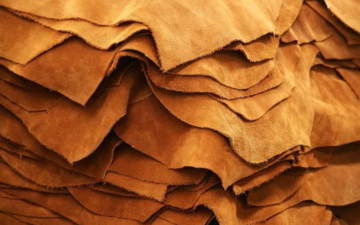Once upon a time, veganism was a fringe movement—a lifestyle that required willpower, dedication, and creativity to navigate through the world’s lack of vegan resources. In 2019, things couldn’t be more different. Veganism is seemingly unstoppable, taking most of the western world by storm and showing no sign of slowing down. In fact, veganism is only forecast to grow in line with the increase of accessible vegan products. One of the main selling points of a vegan lifestyle is the environmental benefits. The livestock required to produce meat, dairy—and leather—takes up the majority of the world’s farmland, producing shocking levels of greenhouse gas emissions and ultimately contributing to climate change. But what exactly is vegan leather made from? Is it sustainable? And will it last as long as animal leather?
If those questions are on your mind, we’ve put together this briefing on the different types of vegan leather and where they come from. We haven’t made this article to denounce the use of animal leather by any means. Leather is a key material used to create the products we know and love here at Heddels, and it always will. We simply want to cover the basics of vegan leather and discuss its pros and cons in an impartial manner.
What is Vegan Leather?
Vegan leather is any material that resembles the aesthetics of animal leather, without using any animal products at all. As normal leather is made from the tanned hides of an animal, vegan leathers utilize a number of synthetic and natural materials to emulate the appearance of animal leather without the need for the death or suffering of an animal.
The Different Types of Vegan Leather
There’s a whole host of vegan leathers out there. We’ve all heard of ‘fake leather’ or ‘pleather’, but vegan leathers span way beyond those core options. With one of the main selling points of a vegan diet being the environmental benefits of cutting out animal products, there is now a variety of innovative plant-based leathers being produced that reduce consumption by utilizing waste organic matter, like leaves and fruit peels. We’ve picked out the main vegan leathers used today and separated them into synthetic and plant-based varieties, setting out the pros and cons for each material respectively.
Synthetic Vegan Leathers
Polyurethane/Pleather
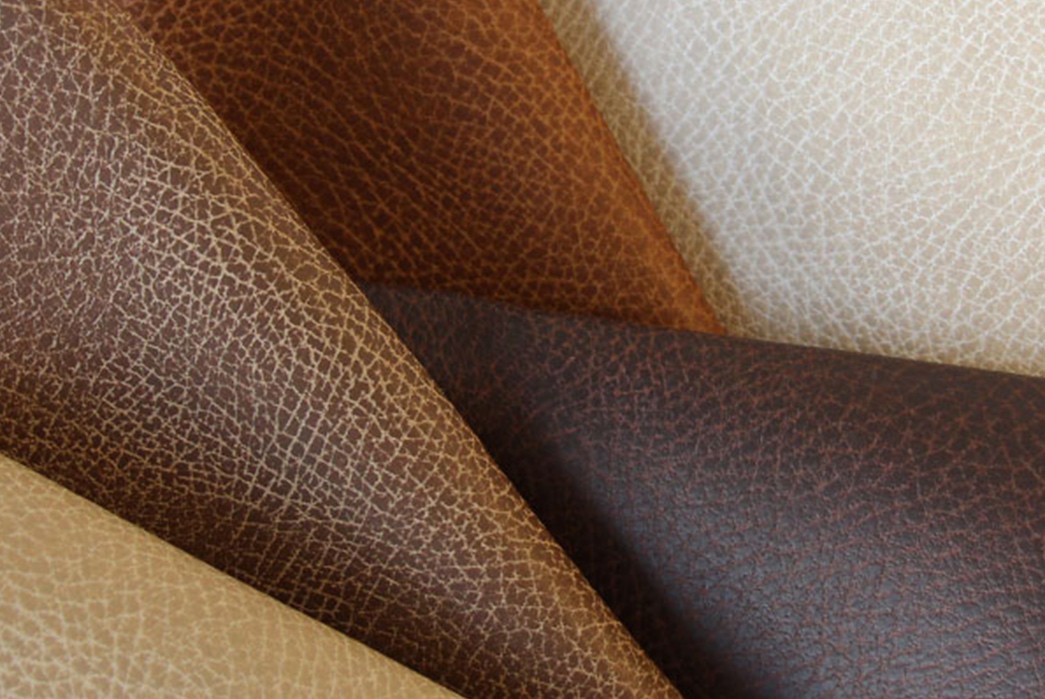
Image via Material District
Polyurethane leather, also known as pleather or Pu Leather, is made by applying or laminating a polyurethane coating to a base material such as polyester, nylon, or cotton. The newly laminated surface is then treated to emulate the grain of animal leather, typically by running a textured roller across the laminated face of the fabric.
Good quality polyurethane leather is a resilient, flexible, and durable fabric that can be easily applied to a variety of products. It also mimics the appearance of leather pretty well, especially when a well-designed, irregular artificial grain is applied.
The term pleather has become a generic name given to any imitation leather, however, this term cannot be applied to the plant-based vegan leathers described below as the ‘pl‘ in pleather is taken from polyurethane, the synthetic material used in the manufacturing of polyurethane leather.
Pros:
- Cheap
- Accessible
- Flexible
- Can be made up in any color
Cons:
- Polyurethane is made from non-renewable fossil fuels, making it unsustainable
- Un-biodegradable
- Does not age well
- Lack of traditional leather patina
Polyvinyl Chloride Leather (PVC)
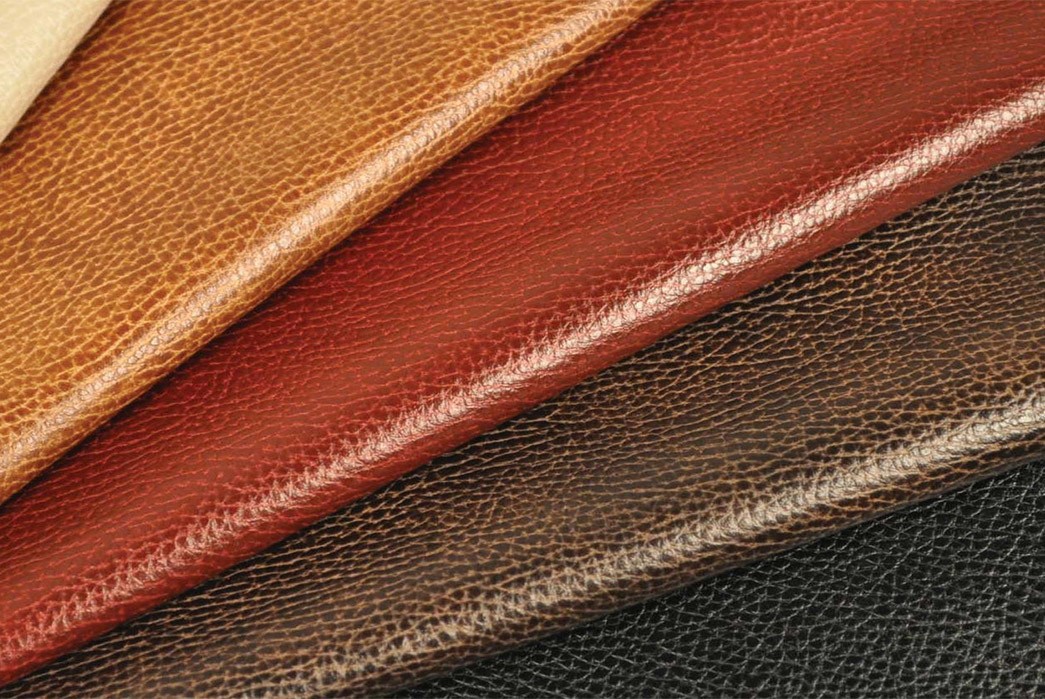
Polyvinyl chloride, better known as PVC or vinyl, is an extremely versatile plastic that has an exhaustive list of applications. Flooring, car parts, pipes, plastic furniture, you name it. When it comes to faux-leather, PVC is made in the same way as polyurethane. A coating of PVC is bonded to a base layer of fabric, and then textured. The resulting material is very similar to polyurethane leather in terms of aesthetic and composition.
Pros:
- Cheap
- Accessible
- Flexible
- Can be made up in any color
Cons:
- Polyvinyl Chloride is made from non-renewable fossil fuels, making it unsustainable
- Typically shiny and cheap looking
- Un-biodegradable
- Lack of traditional leather patina
- Poor longevity
Recycled Plastic/Rubber
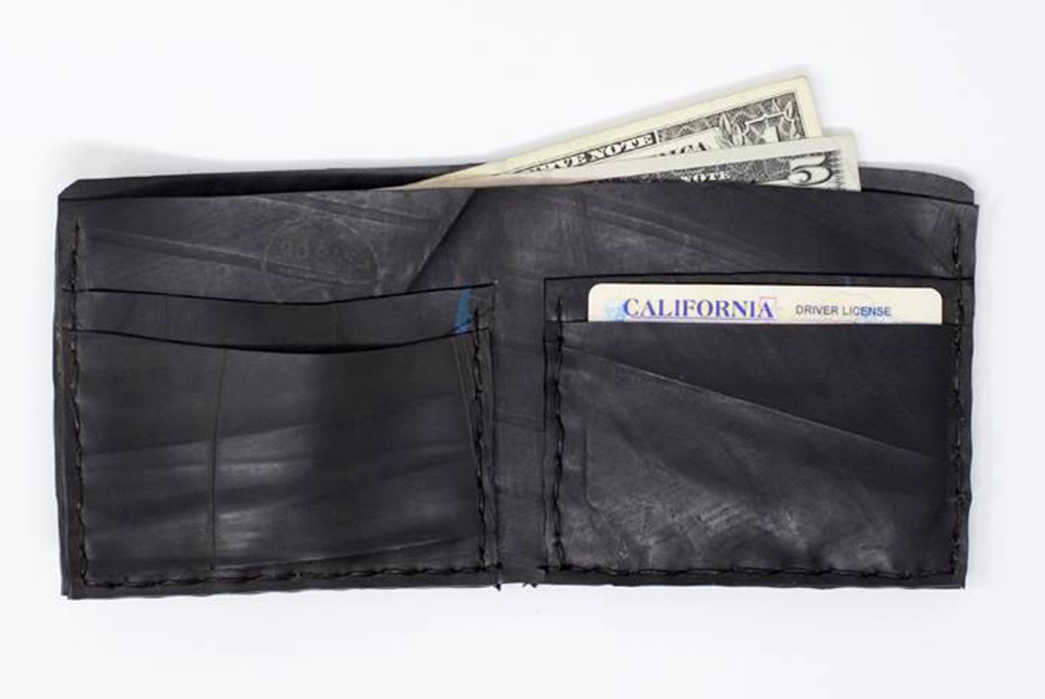
A money wallet made from recycled tires via HumanKind Fair Trade
Many types of waste plastic and rubber can be treated and processed to form faux-leather materials, such as old car tires and plastic bottles.
Pros:
- Environmentally friendly
- Sustainable
- Sturdy
Cons:
- Lack of application to everyday products
- Not readily available
- Limited color potential
- Lack of traditional leather patina
Plant-based Faux Leathers
Apple Leather
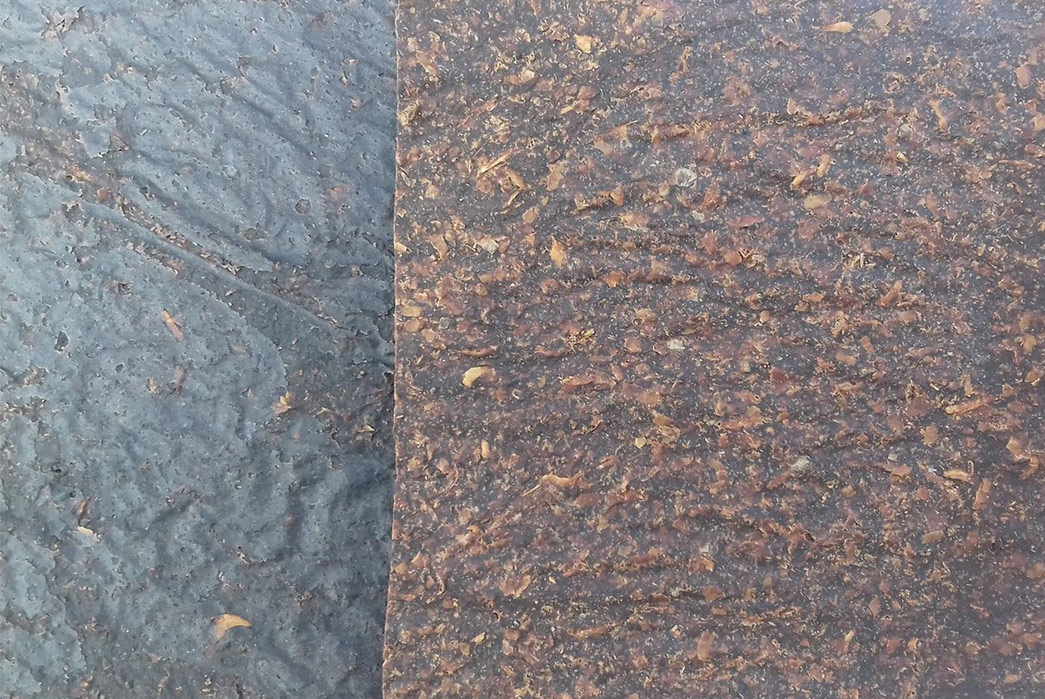
The Apple Girl leather via Infuse Humber
The food waste produced by juice and cider operations has proven to be an unlikely resource for a new breed of sustainable faux leathers. Copenhagen-based company, The Apple Girl, have made a name for themselves by turning apples into leather. Pulp from the apple residue is treated, rolled out into strips, and heated resulting in a flexible, hardy material that is 100% biodegradable. Each meter of apple leather requires only 1 liter of water during production, which is a fraction of the water required to produce bovine leather. Philadelphia-based company, Veggani, also use ‘apple peel leather’ to make a range of accessories. This material is derived from apple peels which are dried, powderized, and mixed with polyurethane before being processed into a faux leather.
Pros:
- Less polyurethane, with The Apple Girl’s variant 100% apples
- Utilizes waste product that would otherwise be discarded, reducing consumption
- Highly textured
Cons:
- Yet to be tested for true longevity
- Not widely produced or applied
- Only one producer of 100% apple leather, The Apple Girl, with other apple leathers requiring polyurethane
- Cannot be produced with a smooth texture
Pineapple Leather
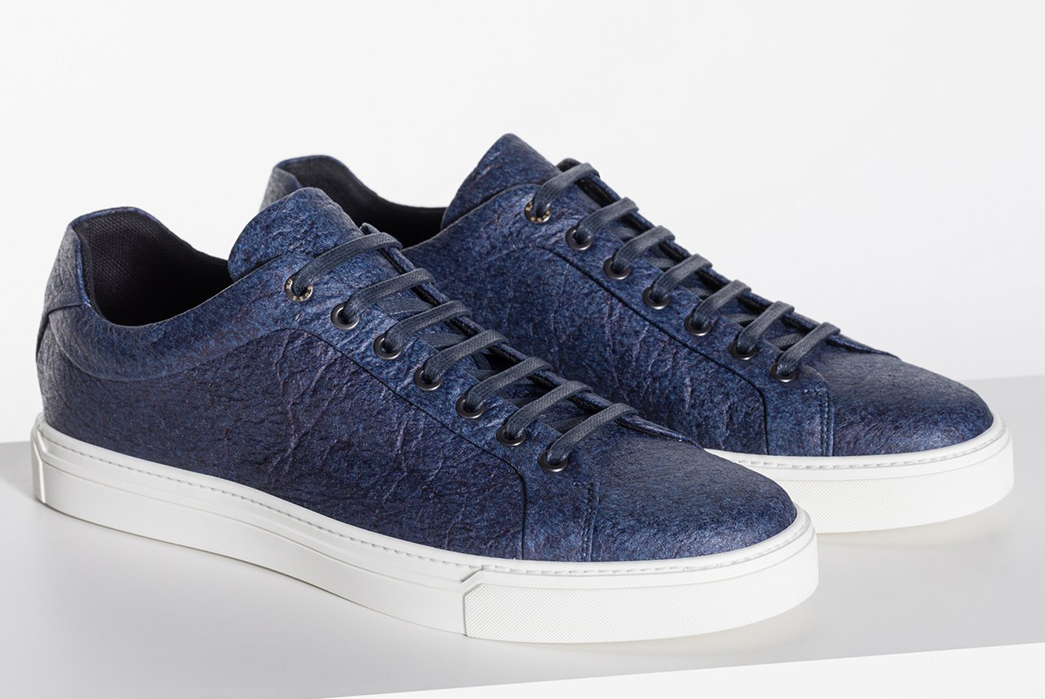
Hugo Boss Piñatex sneakers via Hugo Boss
Piñatex is an innovative faux-leather made from pineapple leaf fiber. As pineapple leaves are normally discarded after pineapple harvesting, Piñatex requires no additional raw environmental resources to produce. It does, however, require a polyurethane coating during production, but this shouldn’t take away from the fact that Piñatex is chiefly made from waste harvesting matter.
Pros:
- Made from waste organic matter from pineapple harvesting, reducing consumption
- Unique texture
- Becoming more accessible, used by brands such as Puma and Hugo Boss
- Can be made up in any color
Cons:
- Currently requires a polyurethane treatment
- Yet to be tested for true longevity
- Cannot be produced with a completely smooth texture
MuSkin
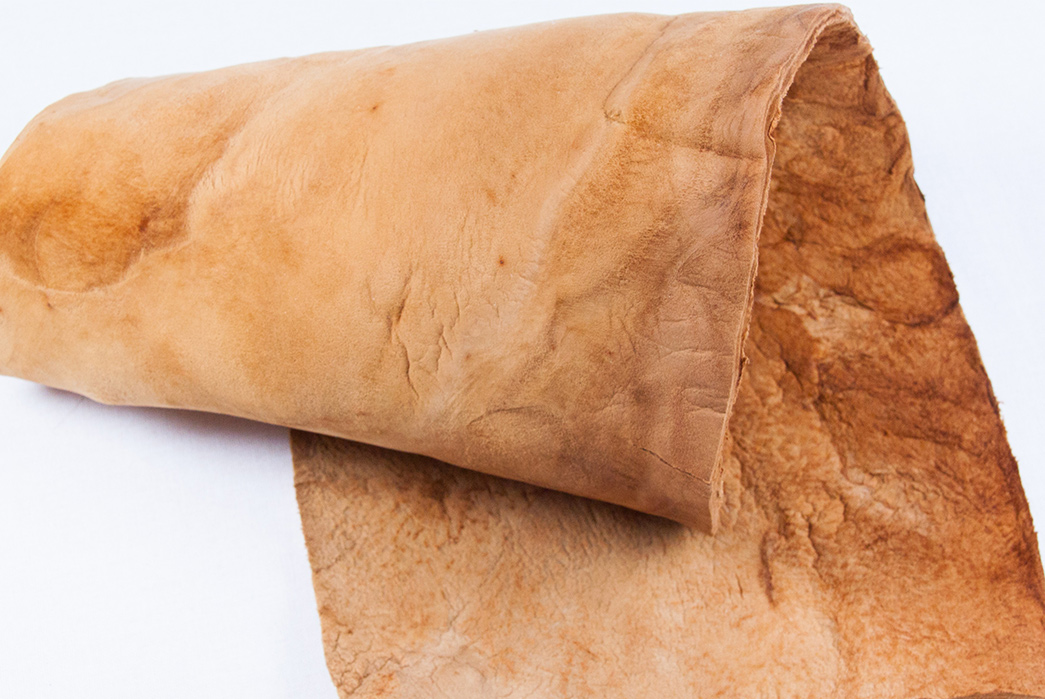
MuSkin via Material District
A 100% vegetable-based leather alternative, MuSkin is made from a fungus called Phellinus ellipsoideus. Once harvested, the caps of the mushrooms are processed and treated with natural substances like eco-friendly wax. This completely natural process results in a highly textured material that boasts an interesting grain similar to some animal leathers. MuSkin is also a thermal insulator that absorbs damp and releases it immediately, thus limiting bacterial proliferation.
Pros:
- 100% natural
- Sustainable, biodegradable, and eco-friendly
- Unique, irregular texture that resembles animal leather
- Breathable
Cons:
- Not widely produced
- Yet to be tested for true longevity
- Limited colors
Conclusion
With the oat-milk fuelled vegan train continually picking up steam, vegan leather is not going anywhere. While polyurethane is technically unsustainable, the plant-based innovations that are emerging across the board are helping to reduce the use of this finite resource. If the recent surge in veganism is to continue, advancements will have to be made to make 100% natural faux leathers like MuSkin completely accessible on a mass scale. And whether this is possible or not is another question entirely. It could also be argued that, in terms of consumption, it is more ‘sustainable’ to purchase one leather item that will last a lifetime, instead of multiple faux-leather items that eventually break and need replacing. The arguments for both sides, as it stands, remain wide open.
What all vegan leathers certainly do offer is a cruelty-free alternative to animal leather, which is the most important factor to most vegans and vegetarians. Whether this is something that is on your agenda or not, we will certainly be seeing more vegan leather products in the near future, and plant-based leathers like MuSkin and Piñatex are innovations that could change the faux-leather market forever.

